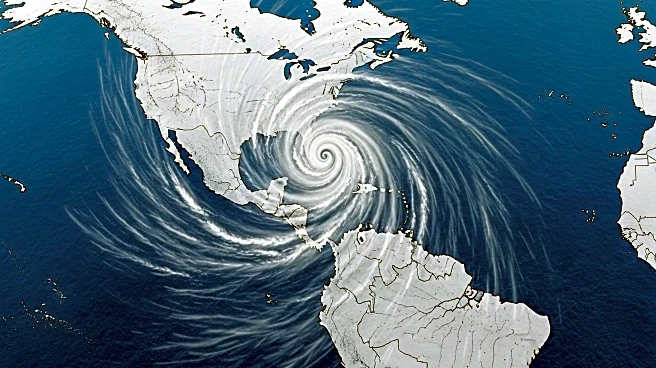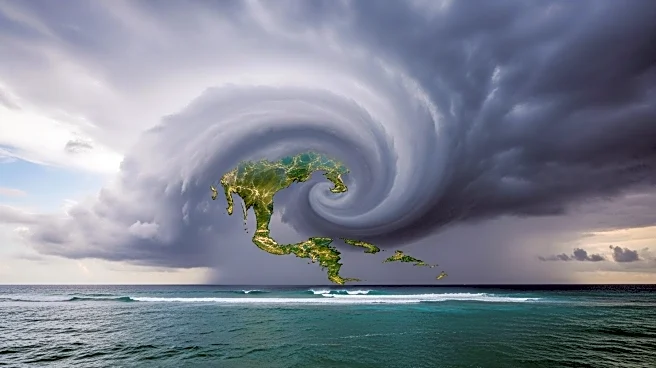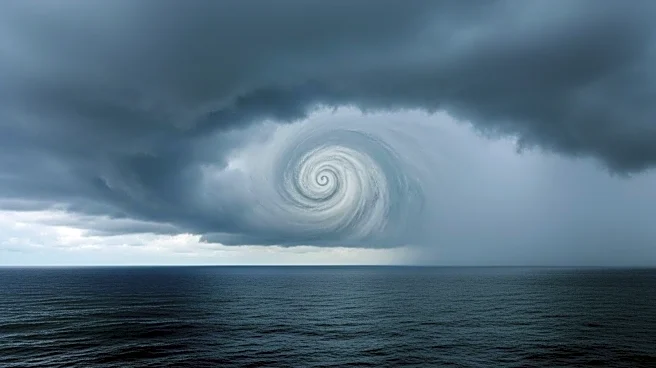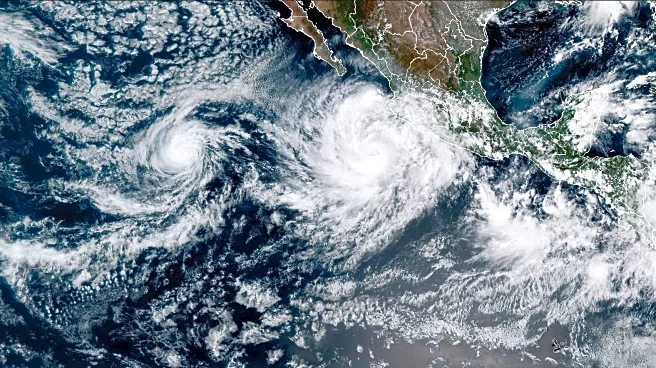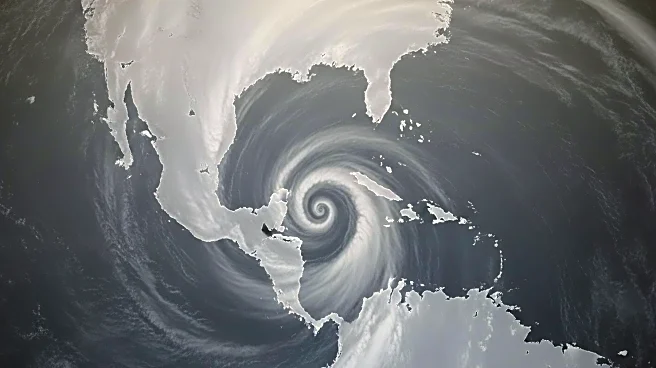What's Happening?
Tropical Storm Jerry has formed over the central Atlantic Ocean and is anticipated to strengthen into a hurricane by Wednesday. As the 10th named storm of the season, Jerry currently has sustained winds of 50 mph and is located over 1,000 miles east-southeast of the northern Leeward Islands. A tropical storm watch has been issued for several islands, including Barbuda and Anguilla, indicating possible sustained winds of 39 to 73 mph within 48 hours. The storm is projected to pass near or north of the northern Leeward Islands later this week as a Category 1 hurricane. However, it is not expected to pose a threat to the mainland United States due to a cold front that will likely deflect it out to sea.
Why It's Important?
The formation of Tropical Storm Jerry highlights the ongoing activity in the Atlantic hurricane season, which has seen a late surge in storm development. This season has already produced three hurricanes in a short span, raising concerns about potential impacts on Caribbean islands. While Jerry is not expected to affect the U.S. mainland, the situation underscores the importance of monitoring weather patterns that could lead to late-season storms, particularly in the Gulf and Caribbean regions. These areas are closer to land and have a higher chance of causing significant impacts if storms develop.
What's Next?
Forecasters will continue to monitor Jerry's path and potential strengthening. The issuance of tropical storm watches suggests that residents in the northern Leeward Islands should prepare for possible impacts. Additionally, meteorologists are keeping an eye on weather patterns that could lead to further storm development in the Gulf and Caribbean later in the month.

